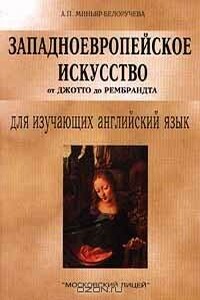Западноевропейское искусство от Джотто до Рембрандта. Для изучающих английский язык | страница 23
С 1482 по 1499 гг. Леонардо жил в Милане. Это был один из лучших периодов творчества художника. Здесь он написал «Мадонну в гроте» – первую монументальную алтарную композицию Высокого Ренессанса. Самая большая работа Леонардо – роспись стены трапезной монастыря Санта Мария делла Грацие на сюжет «Тайной Вечери». Христос в последний раз встречается за ужином со своими учениками, чтобы объявить о предательстве одного из них. Леонардо показал реакцию двенадцати апостолов на слова учителя. Судьба фрески трагична. Эксперименты Леонардо привели к ее быстрому осыпанию.
В 1503 г. во Флоренции Леонардо выполнил картину на тему битвы миланцев и флорентийцев при Ангиари, заказанную для стены нового зала палаццо Синьории и создал портрет Моны Лизы, супруги Франческо дель Джокондо. Мона Лиза изображена на фоне пейзажа с мостами и дорогами в никуда, скалами, исчезающими в облаках. В портрете Моны Лизы достигнута наивысшая степень гармонии и красоты образа эпохи Высокого Ренессанса.
VIII. Summarize the text.
IX. Topics for discussion.
1. Leonardo's religious paintings.
2. Leonardo's portraits.
3. Leonardo's artistic influence.
Unit VI Michelangelo Buonarroti (1475-1564)
The sixteenth century in central Italy was dominated by the colossal genius of Michelangelo BuonarrotI.
Michelangelo learned the techniques of painting during a year of his boyhood spent in Ghirlandaio's studio, sculpture he studied with Bertoldo di Giovanni, the pupil of Donatello. His earliest masterpiece is the Pieta, done in 1498-99/1500 during his first stay in Rome. The perfect formation of the slender Christ, lying across the knees of his mother, excited the admiration of Michelangelo's contemporaries. The exquisite Virgin looks as young as her son. The ageless Virgin is a symbol of the Church, she presents the timeless reality of Christ's sacrifice. The extreme delicacy in the handling of the marble and the contrast between the long lines of Christ's figure and the crumpled drapery folds produce passages of a beauty that Michelangelo never surpassed, despite the grandeur of his mature and late work.
The heroic style for which Michelangelo is generally known is seen in the David more than 14 feet in height, which was carved in 1501-4, for a lofty position on one of the buttresses of the Cathedral of Florence. When the statue was completed, it was so beautiful that the Florentines could not sacrifice it in such a position. It was placed in front of the Palazzo Vecchio, where it became a symbol of the republic ready for battle against its enemies. The David became the first true colossus of the High Renaissance.




